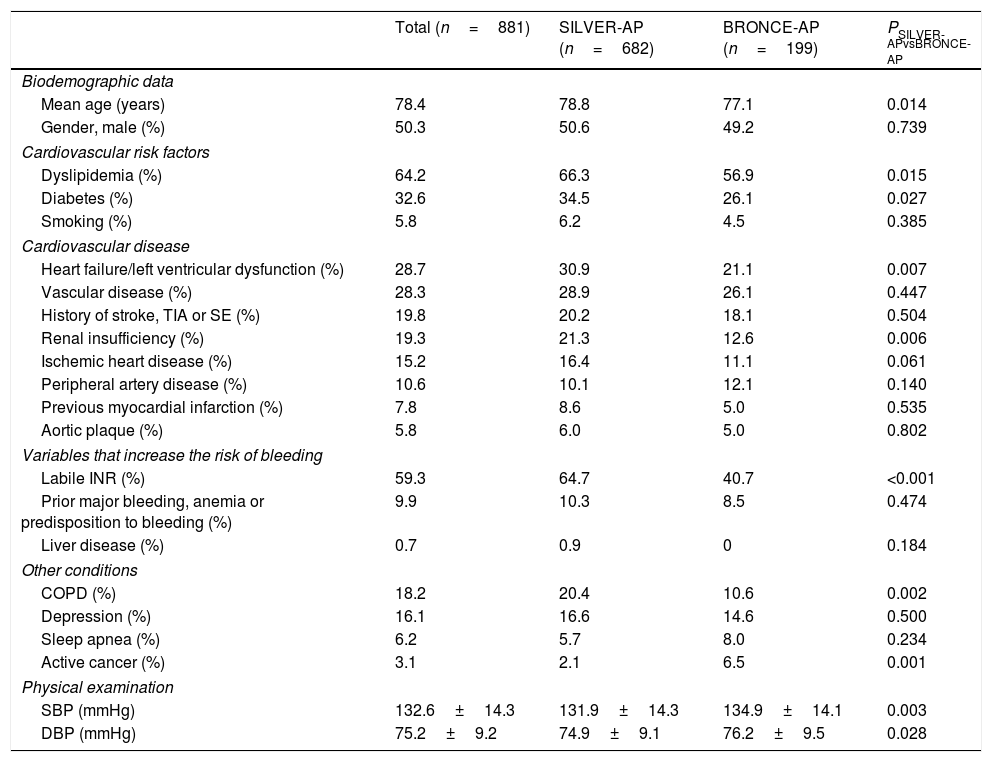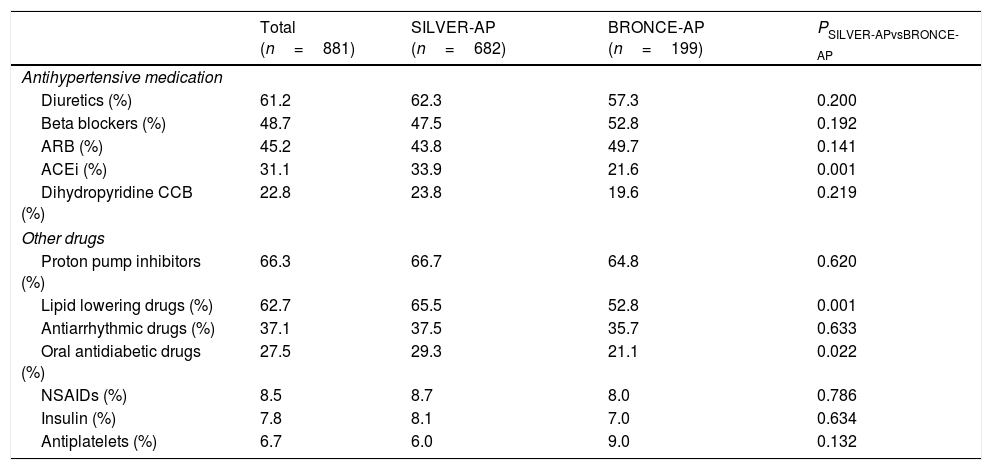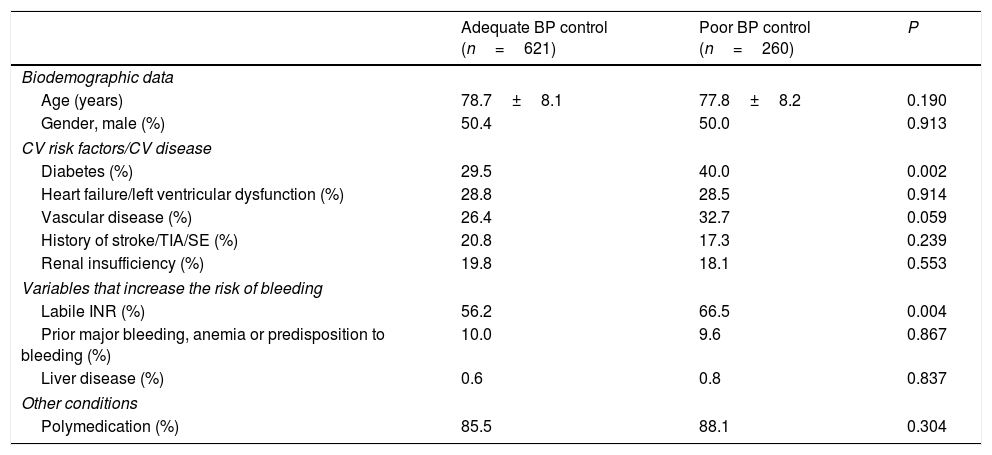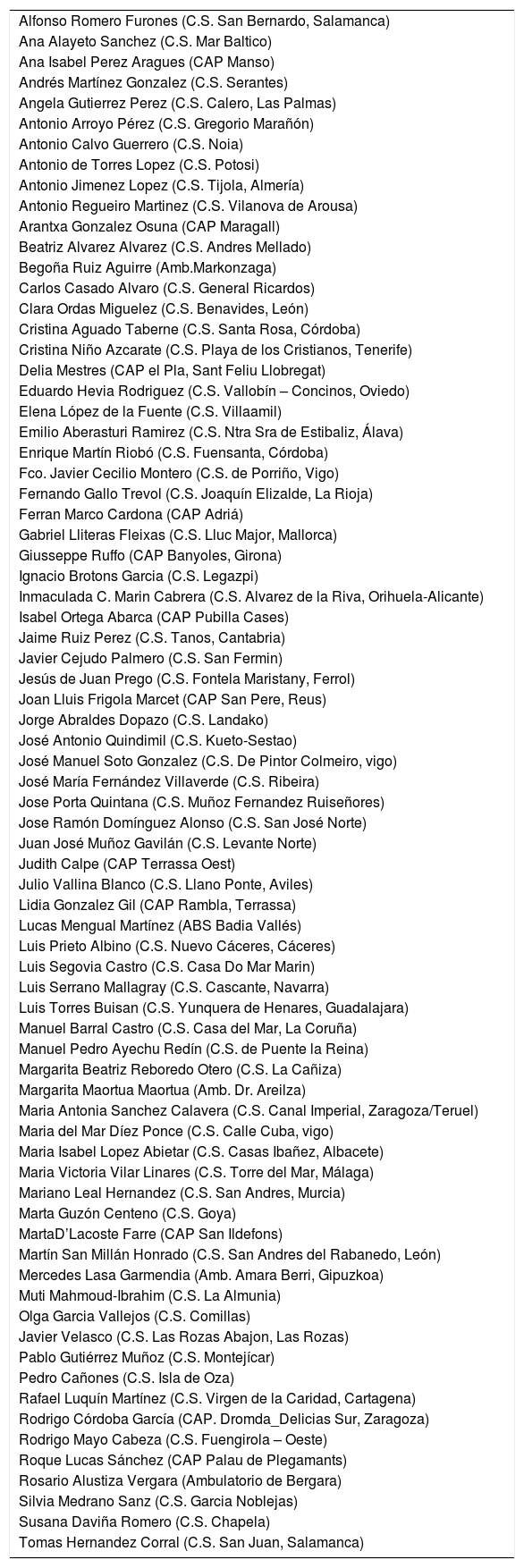To determine the clinical characteristics and management of hypertensive patients with nonvalvular atrial fibrillation (AF) treated with direct oral anticoagulants (DOACs) according to blood pressure (BP) control.
MethodsFor this purpose, data from two observational, cross-sectional and multicenter studies were combined. In both studies, patients on chronic treatment with anticoagulants and that were on current treatment with DOACs at least for 3 months were included. Adequate BP was defined as a systolic BP<140mmHg and a diastolic BP<90mmHg (<140/85mmHg if diabetes).
ResultsOverall, 1036 patients were included. Of these, 881 (85%) had hypertension that were finally analyzed. The presence of other risk factors and cardiovascular disease was common. Mean BP was 132.6±14.3/75.2±9.2mmHg and 70.5% of patients achieved BP goals. Those patients with a poor BP control had more frequently diabetes, and a history of prior labile INR. Patients had a high thromboembolic risk, but without significant differences according to BP control. By contrast, more patients with a poor BP control had a higher bleeding risk (HAS-BLED ≥3: 24.0% vs 35.4%; P<0.001). HAS-BLED score was an independent predictor of poor BP control (odds ratio 1.435; 95% confidence interval 1.216–1.693; P<0.001). Satisfaction with anticoagulant treatment was independent of BP control.
ConclusionsMore than two thirds of our patients with hypertension and AF anticoagulated with DOACs achieve BP targets, what is clearly superior to that reported in the general hypertensive population.
Determinar las características clínicas y el manejo de hipertensos con fibrilación auricular no valvular (FANV) tratados con anticoagulantes orales directos (ACOD) de acuerdo al control de la presión arterial (PA).
MétodosSe combinaron los datos de 2 estudios observacionales, transversales y multicéntricos. En ambos estudios se incluyeron a pacientes tratados crónicamente con anticoagulantes y que estuviesen actualmente siendo tratados con ACOD al menos durante 3 meses. Se definió como control adecuado de la PA, tener una PA sistólica<140mmHg y una PA diastólica<90mmHg (<140/85mmHg, si diabetes).
ResultadosSe incluyeron 1.036 pacientes. De estos, 881 (85%) tenían hipertensión, que fueron finalmente analizados. La presencia de otros factores de riesgo y enfermedades cardiovasculares fue frecuente. La PA media fue de 132,6±14,3/75,2±9,2mmHg; el 70,5% de los pacientes lograron los objetivos de PA. Aquellos pacientes con un pobre control de PA tuvieron más frecuentemente diabetes, y antecedentes de INR lábil. Los pacientes tenían un elevado riesgo tromboembólico, pero sin diferencias de acuerdo al control de PA. Hubo más pacientes con un pobre control de PA con un mayor riesgo de sangrado (HAS-BLED ≥3: 24,0 vs. 35,4%; p<0,001). La puntuación HAS-BLED fue un predictor independiente de pobre control de PA (OR: 1,435; IC 95%: 1,216-1,693; p<0,001). La satisfacción con el tratamiento anticoagulante fue independiente del control de PA.
ConclusionesMás de dos tercios de nuestros hipertensos con FANV anticoagulados con ACOD logran los objetivos de PA, lo que es claramente superior a lo reportado en la población hipertensa general.
Artículo
Comprando el artículo el PDF del mismo podrá ser descargado
Precio 19,34 €
Comprar ahora












